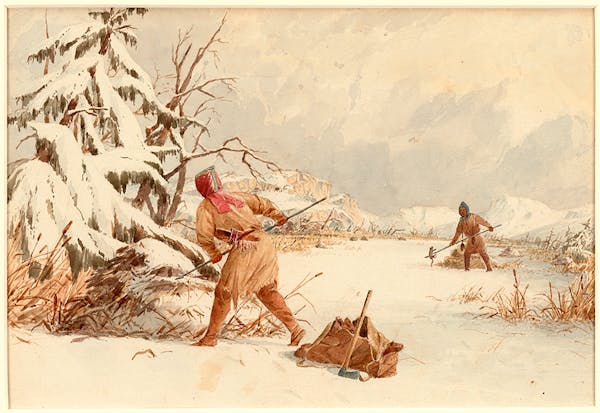Fort Snelling is now part of a national nonprofit's "National Treasures" campaign and has been dubbed "Bdote Fort Snelling" by the organization.
The designation and the new name, from the National Trust for Historic Preservation, recognize the fort's connections to American Indian history, its role as a military post in the two previous centuries and its connection to significant events, including the U.S. Supreme Court's Dred Scott decision in 1857 and the Japanese language school during World War II. The historic fort, near Minneapolis-St. Paul International Airport, is the first site to receive the designation in Minnesota.
While Fort Snelling will retain its official name, the trust now calls it "Bdote," a Dakota word meaning where two waters come together, a spiritual and cultural point of origin. The fort is at the confluence of the Mississippi and Minnesota rivers.
The group doesn't have the authority to officially change the name of the state park and national historic landmark.
"Bdote Fort Snelling connects us to and helps us tell the story of several chapters of history in North America," said Stephanie Meeks, president of the trust. "This site helps us understand the breadth of the human experience in North America."
She acknowledged that not all the events were positive, but said it's important to let future generations understand the complex history.
Bdote Fort Snelling includes the entire area known as Fort Snelling: the Upper Post, Historic Fort Snelling, Fort Snelling State Park, Fort Snelling National Cemetery, Coldwater Spring and the confluence of the rivers.
Minnesota Historical Society CEO Steve Elliott said the timing helps with the state organization's efforts to revitalize the state's best-known historic landmark. The idea, Elliott said, is to "help us realize our goal of creating a place that provides important historical context to our nation, brings people together for crucial conversations, and builds understanding around issues that still resonate today."
Fort Snelling was established by the U.S. government in 1820 and named for Col. Josiah Snelling. The original buildings, Historic Fort Snelling, are a popular tourist destination, but other parts haven't gotten much attention.
Dred Scott and his wife, Harriet, lived at the fort as slaves. Dred Scott later sued for his freedom. In a pivotal ruling, the U.S. Supreme Court said Scott wasn't a citizen so he had no standing to sue. The case fomented tensions leading to the Civil War.
During World War II, some 6,000 Japanese-Americans were trained in the Japanese language and military intelligence and terminology.
The National Trust for Historic Preservation, a privately funded nonprofit organization, works to save America's historic places. Its website is savingplaces.org.
Rochelle Olson • 612-673-1747
Twitter: @rochelleolson

New TV ad rails against Minnesota abortion ballot initative that hasn't passed the Legislature yet
Suspect pulled gun outside Montrose store before deputy shot and wounded him, BCA says

Minneapolis approves $15 minimum for cigarette packs, highest in U.S.

